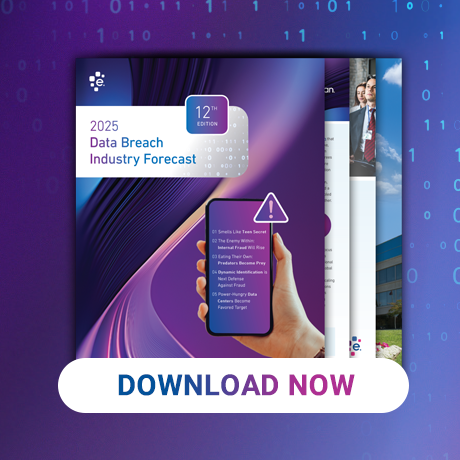
In today’s digital landscape, where data breaches and cyberattacks are rampant, businesses face increasing security challenges. One of the most prevalent threats is credential stuffing—a cyberattack in which malicious actors use stolen username and password combinations to gain unauthorized access to user accounts. As more personal and financial data gets leaked or sold on the dark web, these attacks become more sophisticated, and the consequences for businesses and consumers alike can be devastating.
But there are ways to proactively fight credential stuffing attacks and protect your organization and customers. Solutions like our identity protection services and behavioral analytics capabilities powered by NeuroID, a part of Experian, are helping businesses prevent fraud and ensure a safer user experience.
What is credential stuffing?
Credential stuffing is based on the simple premise that many people reuse the same login credentials across multiple sites and platforms. Once cybercriminals can access a data breach, they can try these stolen usernames and passwords across many other sites, hoping that users have reused the same credentials elsewhere.
This form of attack is highly automated, leveraging botnets to test vast numbers of combinations in a short amount of time. If an attacker succeeds, they can steal sensitive information, access financial accounts, or carry out fraudulent activities.
While these attacks are not new, they have become more effective with the proliferation of stolen data from breaches and the increased use of automated tools. Traditional security methods—such as requiring complex passwords or multi-factor authentication (MFA)—are useful but not enough to prevent credential stuffing fully.
How we can help protect against credential stuffing
We offer comprehensive fraud prevention tools and multi-factor authentication solutions to help you identify and mitigate credential stuffing threats.
We use advanced identity verification and fraud detection technology to help businesses assess and authenticate user identities in real-time. Our platform integrates with existing authentication and risk management solutions to provide layered protection against credential stuffing, phishing attacks, and other forms of identity-based fraud.
Another key element in our offering is behavioral analytics, which goes beyond traditional methods of fraud detection by focusing on users’ data entry patterns and interactions.
NeuroID and Experian partner to combat credential stuffing
We recently acquired NeuroID, a company specializing in behavioral analytics for fraud detection, to take the Experian digital identity and fraud platform to the next level.
Advanced behavioral analytics is a game-changer for preventing credential-stuffing attacks. While biometrics track characteristics, behavioral analytics track distinct actions. For example, with behavioral analytics, every time a person inputs information, clicks in a box, edits a field, and even hovers over something before clicking on it or adding the information to it, those actions are tracked. However, unlike biometrics, this data isn’t used to connect to a single identity. Instead, it’s information businesses can use to learn more about the experience and the intentions of someone on the site.
NeuroID and Experian’s paired fraud detection capabilities offer several distinct advantages in preventing credential stuffing attacks:
- Real-time threat detection: Analyze thousands of behavioral signals in real-time to detect user behavior that suggests bots, fraud rings, credential stuffing attempts, or any number of other cybercriminal attack strategies.
- Fraud risk scoring: Based on behavioral patterns, assign a fraud risk score to each user session. High-risk sessions can trigger additional authentication steps, such as CAPTCHA or step-up authentication, helping to stop credential stuffing before it occurs.
- Invisible to the user: Unlike traditional authentication methods, behavioral analytics work seamlessly in the background. Users do not need to take extra steps—such as answering additional security questions or entering one-time passwords.
- Adaptive and self-learning: As users interact with your website or app, our system continuously adapts to their unique behavior patterns. Over time, the system becomes even more effective at distinguishing between legitimate and malicious users without collecting any personally identifiable information (PII).
Why behavioral data is critical in combating credential stuffing
Credential stuffing attacks rely on the ability to mimic legitimate login attempts using stolen credentials. Behavioral analytics, however, can spot the subtle differences between human and bot behavior, even if the attacker has the correct credentials. By integrating behavioral analytics, you can:
- Prevent automated attacks: Bots often interact with websites in unnatural ways—speeding through form fields, using erratic mouse movements, or attempting logins from unusual or spoofed geographic locations. Behavioral analytics can flag these behaviors before an account is compromised.
- Detect account takeovers early: If a legitimate user’s account is taken over, behavioral analytics can detect the change in interactions. By monitoring behavior, businesses can detect account takeover attempts much earlier than traditional methods.
- Lower false positive rates: Traditional fraud prevention tools often rely on rigid rule-based systems that can block legitimate users, especially if their login patterns slightly differ from the norm. On the other hand, behavioral analytics analyzes a user’s real-time behavioral data without relying on traditional static data such as passwords or personal information. This minimizes unnecessary flags on legitimate customers (while still detecting suspicious activity).
- Improve customer experience: Since behavioral analytics is invisible to users and requires no extra friction (like answering security questions), the login and transaction verification process is much smoother. Customers are not inconvenienced, and businesses can reduce the risk of fraud without annoying their users.
The future of credential stuffing prevention
Credential stuffing is a growing threat in today’s interconnected world, but with the right solutions, businesses can significantly reduce the risk of these attacks. By integrating our fraud prevention technologies and behavioral analytics capabilities, you can stay ahead of the curve in securing user identities and preventing unauthorized access.
The key benefits of combining traditional identity verification methods with behavioral analytics are higher detection rates, reduced friction for legitimate users, and an enhanced user experience overall. In an era of increasingly sophisticated cybercrime, using data-driven behavioral insights to detect user riskiness is no longer just a luxury—it’s a necessity.


